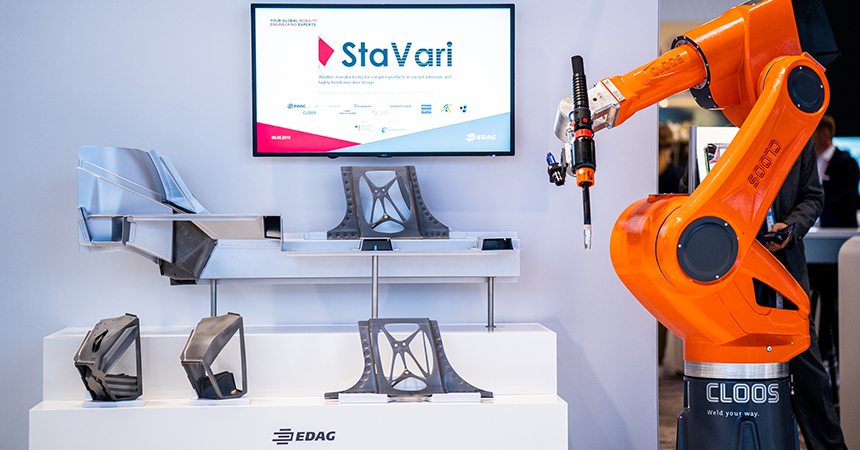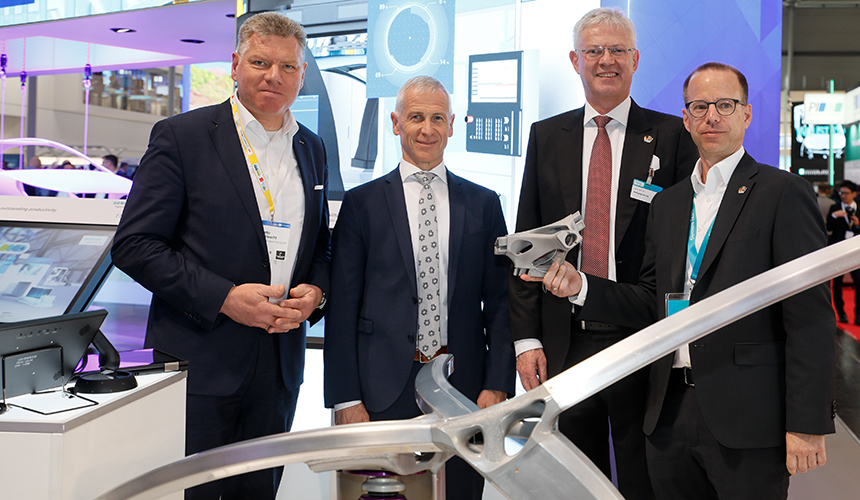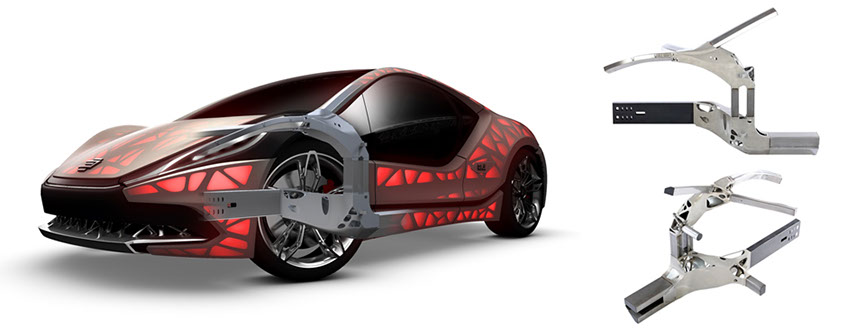StaVari is a research project, led by German-based automotive engineering service provider EDAG Group, aiming to create a fully integrated additive manufacturing process chain for the production of automotive components. The project, consisting of nine other research partners, aims to produce the parts using a newly developed steel powder alloy, tailor-made for car body applications, and laser additive manufacturing (LAM).
The result of the research is a production cell equipped with robots for an automated additive manufacturing process capable of producing complex automotive components. Partners of the StaVari project include GE-owned metal 3D printer manufacturer Concept Laser, as well as Ziehm Imaging, Salzgitter Mannesmann Forschung, Cloos, hema electronic, Indutherm, IWT Bremen, Fraunhofer IAPT and SLK TU Chemnitz. The project will also receive funding from the Federal Ministry of Education and Research (BMBF) until April 2020.

3D printing at the EDAG Group
Founded in 1969, EDAG works in the field of product and production plant development. It is considered one of the world’s largest independent development partners of the automotive industry, and has developed a number of concept cars for various automotive firms, some of which it has made with the help of 3D printing.
In April 2019, EDAG and Siemens announced a strengthening of their partnership where both agreed to accelerate additive manufacturing in the automotive industry. Together, the partners developed the Next Generation Space frame 2.0, a modular aluminum structure with bionically designed and additive manufactured nodes. Though sharing similar goals as its collaboration with Siemens, EDAG’s StaVari project is a separate initiative formed to open up automotive opportunities specifically for metal 3D printing.

Supporting vehicle variants using metal additive manufacturing
The first step taken by the StaVari partners was developing a steel alloy powder designed specifically for car body applications. After 3D printing, this powder alloy is said to have properties comparable to those of DP800 dual-phase steel. The material can potentially reduce costs (approx. 60 percent) compared to conventional alloys too.
Following material development, the next step of the project was to develop concepts for component designs based on requirements specified by EDAG. At this stage, the partners also developed material parameters, material maps and CAE design methods.
Following the design phase, EDAG looked to the supply chain: powder production and atomization, LAM, thermal treatment and post processing. Initially developed for lab use, new methods for joining LAM components were explored, then scaled up for use in an industrial environment. Assembly of LAM parts is now undertaken by a robotic production cell in a camera-controlled metal active gas (MAG) welding process. Significantly, this production cell minimizes the need for tooling components that would be used in traditional manufacturing methods.
With the production process refined, EDAG engineers then set towards designing a heavy-duty vehicle structure, which was manufactured in cooperation with all partners as a demonstrator of the project. The stricture comprises the pillars of a car (i.e. vertical window supports). LAM was used to produce the foot reinforcement of the central pillar welded with a traditionally manufactured load path-compatible rear pillar node. According to EDAG, the bionic structure and load level-specific functions of the structure demonstrates new approaches for the automotive industry. The company also hopes that the findings of StaVari can help shorten the time-to-market for prototypes and small series vehicles with steel-based bodies in the future.

Subscribe to the 3D Printing Industry newsletter for the latest news in additive manufacturing. You can also stay connected by following us on Twitter and liking us on Facebook.
Looking for a career in additive manufacturing? Visit 3D Printing Jobs for a selection of roles in the industry.
Featured image shows the StaVari fully integrated process chain for the additive manufacture of complex components . Photo via EDAG.

